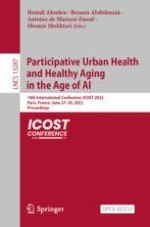1 Introduction
2 Method
2.1 Participants
Characteristics | Participant | ||
|---|---|---|---|
A | B | C | |
Gender | Male | Male | Male |
Age | 53 | 43 | 35 |
Diagnosis | C4 ASIA A | C3 ASIA A | C6 ASIA A |
Onset (Year) | 26 | 10 | 10 |
Type of wheelchair | Power | Power | Manual |
Wheelchair use (hour/for a day) | 5 | 10 | 10 |
2.2 ICT-Based Customized Off-Loading Cushion
2.2.1 Customized Off-Loading Cushion
2.2.2 Pressure Distribution and Posture Change Monitoring System
2.3 Study Protocol
2.3.1 Satisfaction
2.3.2 Psychosocial Impact
3 Result
3.1 Satisfaction
Item | Participants | |||
|---|---|---|---|---|
A | B | C | Mean | |
Dimension | 4 | 5 | 5 | 4.7 |
Weight | 3 | 4 | 5 | 4.0 |
Adjustment | 4 | 5 | 4 | 4.3 |
Safety | 4 | 5 | 5 | 4.7 |
Durability | 4 | 5 | 3 | 4.0 |
Easy to use | 4 | 5 | 5 | 4.7 |
Comfort | 5 | 5 | 5 | 5.0 |
Effectiveness | 5 | 5 | 5 | 5.0 |
Item | Participants | |||
|---|---|---|---|---|
A | B | C | Mean | |
Service delivery | 4 | 5 | 5 | 4.7 |
Repair service | 3 | 5 | 5 | 4.3 |
Professional service | 5 | 5 | 4 | 4.7 |
Follow-up service | 3 | 5 | 5 | 4.3 |
3.2 Psychosocial Impact
Scale | Participants | |||
|---|---|---|---|---|
A | B | C | Mean | |
Competence | 2.17 | 2.42 | 2.58 | 2.39 |
Adaptability | 2.50 | 2.67 | 2.67 | 2.61 |
Self-esteem | 2.13 | 2.63 | 2.50 | 2.42 |
